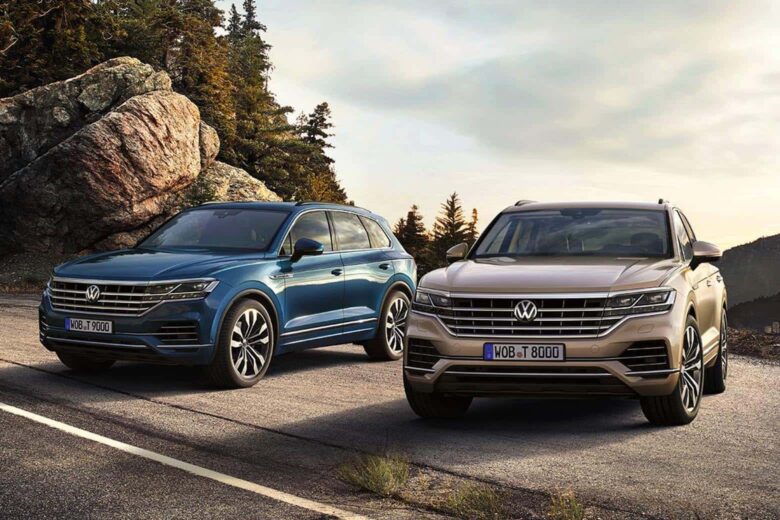As a global powerhouse on wheels, Volkswagen Group drives us to the roads of tomorrow with unparalleled momentum. It is the undisputable dominating force in the automotive world, supplying 8.5 million vehicles per year spread across more than 150 countries.
6.12M
vehicles sold per year
Within the Volkswagen Group companies, you can find everything from pragmatic family cars to luxury beyond imagination. Whether you want high-performance exhilaration or a relaxing daily driver, a VW Group car will be the turnkey model of your dreams.
Through its gigantic spread of impressive facilities and brilliant minds, all Volkswagen companies work as a symphony of development, expertise, and construction. The result is a colossal power that continues to surprise us all.
At a glance
| Brand | Volume | % of Group (est.) |
| Volkswagen Passenger Cars | 2,600,000 | 43% |
| Audi | 1,100,000 | 18% |
| Skoda | 900,000 | 15% |
| SEAT | 468,000 | 8% |
| Volkswagen Commercial Vehicles | 340,000 | 6% |
| Porsche | 314,000 | 5% |
| TRATON Group | 306,000 | 5% |
| Ducati | 65,000 | 1% |
| Bentley | 15,500 | 0.25% |
| Lamborghini | 9,200 | 0.15% |
| Bugatti | 80 | <0.01% |
About Volkswagen Group
Coming from modest roots, Volkswagen Group has revved up its engines of innovation and expansion, now cruising through into the next generation of automotive excellence. It is the world’s largest and most dynamic automotive powerhouse, steering a diverse fleet of prized brands.

History of Volkswagen Group
The explosion of the automobile in the early 20th century ignited the world’s obsession with four-wheel personal transportation. From the start, every individually tailored product has faced fierce competition. As time creeps on, many once-bitter rivals have now joined forces under the current Volkswagen Group umbrella.
At the center of this massive conglomerate sits Volkswagen Passenger Cars, the company that started producing affordable cars for the masses in 1937 and continues to hit the target for many.
In the 1960s, VW Group opened its doors to the acquisition of fellow German automaker Audi. And the shared expertise of Audi VW immediately began paying dividends. Audi took risks to reach upmarket and into unique innovations like four-wheel drive, while Volkswagen continued to refine its more pragmatic lineup.
Through the later part of the 20th century, Volkswagen continued growing with strategic acquisitions of brands spanning many different segments. Spanish-based SEAT was one of the early adoptions, followed by Škoda.
Just before the turn of the century, Volkswagen hit the pedal to the metal by absorbing three of the world’s most prestigious brands in 1998, including Bentley, Lamborghini, and Bugatti. And it kept the momentum up in 2009 with the Porsche merger.
Today, Volkswagen Group is a dynamic force that provides an endless stream of vehicles in every segment. You can find anything from modest passenger cars to bespoke luxury models to heavy-duty freight trucks. From the affordable to the most expensive cars around.
Understanding group synergy
By judging skin deep, one can be fooled into thinking all of the Volkswagen Auto Group subsidiaries remain wholly autonomous. Yet by peeling back layers, the harmony is evident as it presents itself through an unimaginable level of efficiency, innovation, and cost reduction.
One of the first ways the Audi Volkswagen Group leveraged their new Audi facilities in the 1960s was to use idle production areas to meet the Beetle’s vast demand.
Right away, the brands worked in unison to create breakthrough models. What started as the Audi 100 eventually was also used as the basis for the Volkswagen Passat. In 1980, Audi leveraged the four-wheel drive system from a VW military vehicle to create the first iteration of Audi Quattro.
Today, one of the incredible ways that Volkswagen Group brands stay ahead is by fusing this sharing mentality into every component possible.
The smaller VW Group platforms are all shared by the Volkswagen, Audi, SEAT, and Skoda vehicles. The A Platform is one of the best examples of an ideal small family car platform that has been consistently reworked and tweaked since its 1974 introduction. It sits under no less than two dozen different models.
But the more luxurious subsidiaries of Volkswagen are also able to get a piece of the pie. Although many aspects remain highly customized for each brand, the Volkswagen Group D Platform serves as the foundation for large Audi executive sedans, as well as select Bentley models, even reaching into the Porsche lineup.
As the Volkswagen Group companies introduce some of the best electric vehicles, the ability to utilize the same modular components has grown. Although the range of Porsche Taycan has many distinct features and capabilities, it also bears the same components as the Audi e-tron GT.
The brands Volkswagen owns will continue to reap the benefits of the worldwide presence and innovation that only comes from the world’s largest automotive company.












